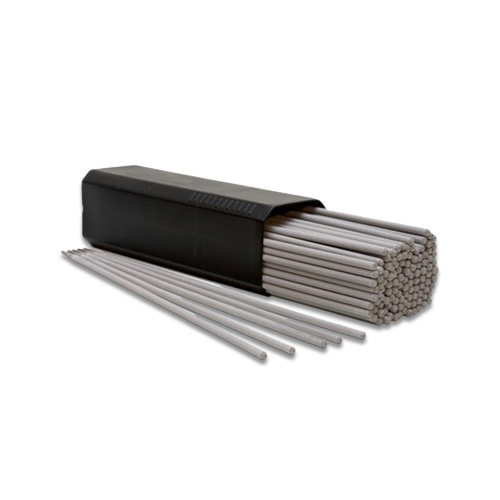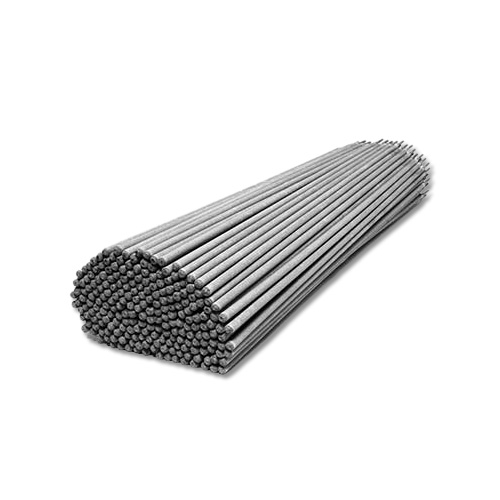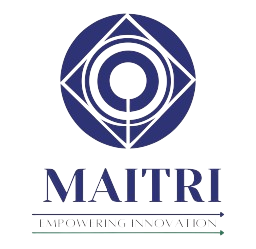Welding electrodes
Home - Electrodes Division - Welding electrodes
Welding electrodes
Welding electrodes are consumable rods or wires used in welding to join metals. The rod serves as both the support for the welding arc and the supply of filler steel needed to weld the connection. The covering strengthens the weld, stabilizes the arc, and shields the metal from damage. They provide filler material, stabilize the arc, and shield the weld pool, ensuring strong, durable welds. Various types exist, including SMAW, GMAW, FCAW, and GTAW electrodes, each suited to different welding processes and materials.


MAITRI METAL (P) LIMITED excels as a channel partner and stockist in the distribution of welding electrodes, providing superior quality and tailored solutions to address a wide range of industrial needs. Our diverse inventory includes various types of welding electrodes—bare, lightly coated, shielded arc, and heavily coated—each selected based on specific attributes like corrosion resistance, ductility, and high tensile strength. The choice of electrode type is guided by factors such as the base metal to be welded and the welding position, whether flat, horizontal, vertical, or overhead
Key Features of Welding Electrodes
Welding Electrodes are essential components in the Welding industry, offering several key features that make them indispensable in various manufacturing processes
- Composition : Welding electrodes are typically made from materials that match or complement the base metals being welded. Common materials include mild steel, stainless steel, aluminum, and specialized alloys.
- Coating : Electrodes are often coated with flux to shield the weld pool from atmospheric contamination, stabilize the arc, and improve the quality of the weld. The flux can be either inorganic (e.g., rutile, cellulose) or organic (e.g., basic).
- Diameter and Length : Electrodes come in various diameters and lengths to suit different welding applications and welding machines.
- Classification : Electrodes are classified based on their composition, coating, and intended welding process according to standards such as American Welding Society (AWS) or International Organization for Standardization (ISO).
- Versatility : Different types cater to a range of welding processes and materials.
- Deposition Rates : Some electrodes offer high deposition rates for increased productivity.
- Quality : Ensure strong, durable welds with proper selection and usage of electrodes.
| Mild Steel | E6013(General Purpose & Structure Welding) |
| C-Mn Steel | E7018, E7018-1, E7018-G, E7016, E7016-1, E6020,E7024 |
| Cellulosic | E6010, E6011, E7010-G, E7010-P1, E8010-G, E8010-P1 |
| Low Alloy Steel | E7018-A1,E8018-B6L, E9013-G, E8018-C4, E10018-M,E12018G, E 8018-82, E8018-88, E8018-C1,E8018-G,E10018-G, E9018-M, E9018-B3, E8018-B8L, E8018-C2, E8016-G, E11018-M, E7018-W1, E7018-B2L, E9018-891, E7018-C2L, E9018-D1, E11018-M, E8018-W2, E8018-B3L, E9015-891, E8018-C3, E9018-G, E11018-G H4R, E8045-P2 H4R, E8018-86, E8013-G, E7018-C3L, E10018-D2, E12018M,E9045-P2 H4R |
| Stainless Steel Electrodes | E308-16, E316L-15, E309-17, E310-16, E310H, E430-15, E308H-16, E317L-16, E309L- 16, E310-17, E240-16, E409cb, E308L-16, E318-16, E309Nb-16, E320-15, E307- 16,E2209-16, E308L-15, E318-17,E309Nb-17, E385-15, E409Nb-16, E2553-16, E308L- 17, E347-16, E309Mo-16, E630-16, E410-15, E2594-15, E316-16, E347-17, E309Mo- 17, E209-16, E410NiMo-15, E2594-16, E316-17, E309-16, E312-16, E219-16, E410NIMO-16, E2595-16, E2595-15 |
| Cast Iron Electrodes | Est, ENiCu-B, ENI-CI, ENiFe-Cl |
| Hardfacing | Zedalloy 250, Zedalloy K, Zedalloy 680, NIMOTEN 9580, Zedalloy 350, Zedalloy 17Cr NS Plus, Maganacane, NIMOTEN 9650, Zedalloy 550, Zedalloy VB, Nimoten Plus 535 A, Nimoten HFD, Zedalloy 550LH, Zedalloy 16, Nimoten Plus 535 B, Zedalloy CoCr-A, |
| Nickel & Nickel Alloys | ENICU7, ENiCrFe-3, ENiCrMo-5, ENiCrMo-12, ENIMO-7, ECuAl-A2, ENi-1, ENiCrMo-3, ENiCrMo-6, ENiCrMo-14, E4043, ECUNI, ENiCrFe-2, ENiCrMo- 4,ENiCrMo-10, ENiCrFe-7, ECuSn-A |
| Cutting & Gouging | CAG 9900, CAG 9901, CAG 9905 |


